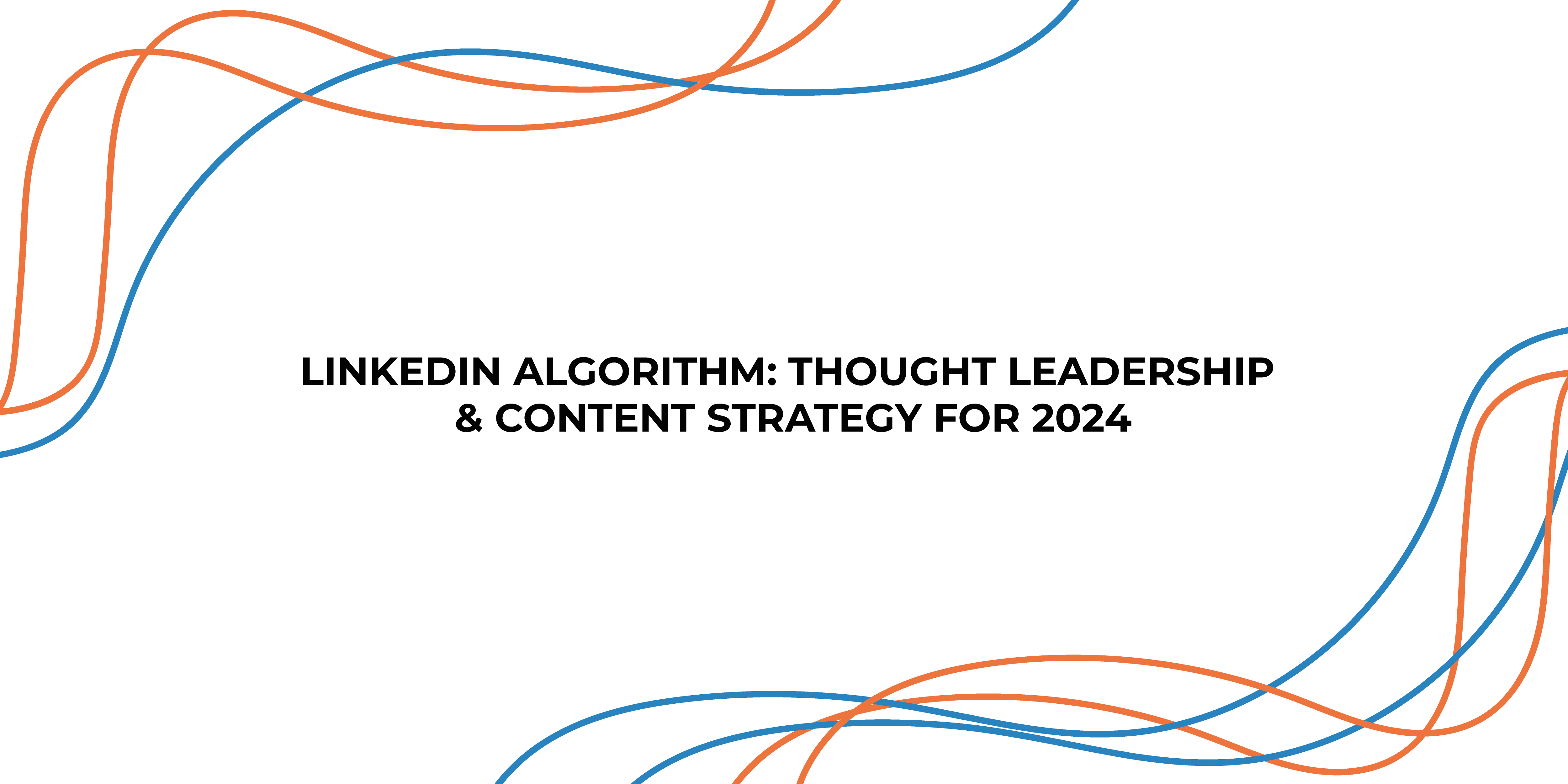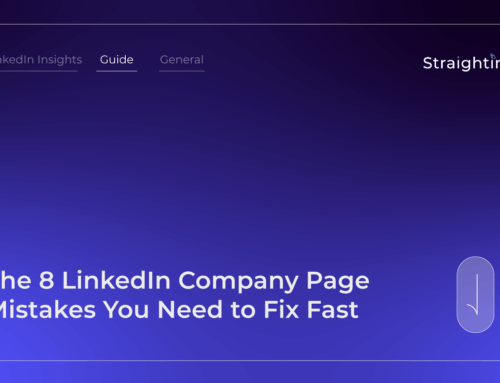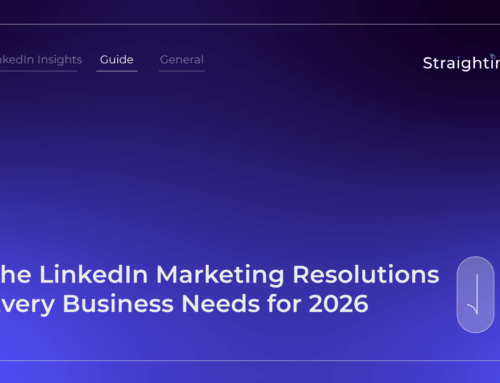We have spoken many times before about the LinkedIn algorithm and its ever-changing nature, and guess what? Yep, that’s right, it’s changing yet again.
LinkedIn likes to keep marketers and content creators on their toes. Just when you think you’ve got it all figured out, LinkedIn decides to shake things up once more. Why all the changes? Well, LinkedIn is on a mission to make our experience on the platform as seamless and relevant as possible. By tweaking the algorithm, they’re fine-tuning the content we see to match our interests and behaviours. It’s all about giving users the best possible experience.
This update to the LinkedIn algorithm is especially helpful for those working to build their reputation as thought leaders on the platform and for B2B marketers seeking to increase their reach and visibility among their target audience. Wondering how? Don’t worry—we’ll break it all down for you today.
What is the latest change to the LinkedIn algorithm?
LinkedIn is rolling out an innovative feature called “suggested posts,” marking a significant shift in how content is showcased on the platform. This new addition is designed to give high-quality content a second chance to shine in users’ feeds, even months after its initial publication.
Imagine you wrote an insightful LinkedIn article on effective leadership strategies half a year ago. Thanks to the suggested posts feature, this article now has the opportunity to reappear in the feeds of users who share an interest in leadership topics. Whether they missed it the first time around or simply weren’t active on the platform at the time it was published, this second chance means that valuable content doesn’t go unnoticed.
This move is all part of LinkedIn’s bigger plan to prioritise valuable knowledge and advice over just chasing viral fame. Essentially, they want to make sure that the content people see is not just the latest but also the most relevant to their interests, regardless of when it was posted.
This is a big departure from the usual social media algorithms that focus heavily on showing you the most recent stuff – whether that be a trending meme or a viral video. Instead, LinkedIn wants to play matchmaker, delivering valuable insights precisely when you need them most. This could be a game-changer, encouraging users to create more useful content, knowing that it could stick around and reach the right people for a lot longer.
But that’s not all – LinkedIn’s got a whole toolbox of new features aimed at boosting user growth and engagement. From custom buttons for premium members to verified badges that build trust, and even through thought leadership ads, there’s a lot in store.
Now, of course, not everyone is thrilled about these changes – you can’t please everyone after all! People are especially concerned about their reach on LinkedIn potentially taking a hit. But LinkedIn’s editor-in-chief, Dan Roth, is here to reassure us. He emphasises that LinkedIn’s focus is on connecting professionals with real economic opportunities, not just racking up likes and shares.
This decision actually brings many benefits for people trying to develop thought leadership on LinkedIn. With the emphasis shifting towards meaningful connections and economic opportunities rather than just superficial engagement metrics, those who produce valuable, insightful content stand to gain a significant advantage over those focused on going viral.
B2B businesses can also benefit from the updated LinkedIn algorithm. By prioritising valuable insights and genuine connections rather than just chasing viral fame, B2B marketers have an opportunity to establish deeper relationships with their target audience. This emphasis on quality content and meaningful engagement can lead to more fruitful partnerships, increased brand credibility, and, ultimately, greater long-term success.
What these changes to the LinkedIn algorithm means for thought leaders?
Many individuals are striving to create a personal brand on LinkedIn and position themselves as thought leaders. The benefits range from broadening professional networks to improving career prospects. However, a common mistake we see time and time again on Linkedin is posting ‘click-bait’ content in attempt to rack up likes and shares over providing genuine value. While getting thousands of likes and reposts may feel good and make you appear … it often misses the mark of true thought leadership, which hinges on delivering insightful expertise that resonates deeply with the audience.
The updated LinkedIn algorithm will significantly impact your content generation strategies on the platform. With LinkedIn’s shift towards valuing quality content over viral sensations, there’s an opportunity for users to establish themselves as thought leaders in their respective fields. Users can become trusted experts by sharing valuable insights, engaging analyses, and actionable advice, attracting a dedicated following and expanding their professional reach.
The new update emphasises meaningful connections, prompting a shift towards more authentic interactions. Rather than solely focusing on likes and shares, the emphasis will be on fostering genuine conversations, offering mutual support, and contributing valuable insights to the community. Developing authentic relationships with peers and industry professionals will increasingly drive long-term success on the platform.
What these changes to the LinkedIn algorithm means for B2B businesses?
From a B2B marketing perspective, this shift opens up new doors to focus on specific industry niches. With LinkedIn’s community networks becoming more tailored to different sectors, businesses have a chance to get laser-focused with their messaging. Take, for example, a cybersecurity software company. They can now share content about the latest data protection trends in dedicated LinkedIn groups for IT security professionals. This targeted approach means their message reaches the right ears, potentially leading to deeper connections and business opportunities.
And LinkedIn’s recent update to prioritise more substantive content, whether that be LinkedIn articles or white papers, over fleeting trends indicates a broader shift towards quality over quantity. This change not only promotes the platform’s utility as a professional resource but also provides businesses with a platform to showcase their expertise through in-depth, insightful posts. By aligning their content strategy with these preferences, businesses can position themselves as trusted authorities within their industry, driving engagement and credibility among their target audience.
As such, it may be worth digging into LinkedIn’s niche discussions and seeing what’s happening in your brand sector. LinkedIn Groups are hubs where professionals share knowledge, exchange ideas, and build relationships. By actively participating in these discussions, businesses can stay informed of industry developments, develop connections with key players, and even identify potential collaborators or clients.
There are over 200 million LinkedIn groups, so whether you’re in tech, finance, healthcare, or anything else, there’s a LinkedIn community waiting for you.
So, to sum up, these changes to the LinkedIn algorithm hold significant implications for both thought leaders and B2B businesses. For thought leaders, it’s a reminder of the importance of providing genuine value to their audience rather than solely focusing on superficial metrics. The updated algorithm provides an opportunity to refine content strategies, prioritizing insightful expertise that resonates deeply with the audience.
From a B2B marketing perspective, these changes offer promising prospects for targeting specific industry niches and building deeper connections with professionals in those sectors. With LinkedIn’s emphasis on quality content and meaningful interactions, businesses can position themselves as trusted authorities within their industry, fostering engagement and credibility.







